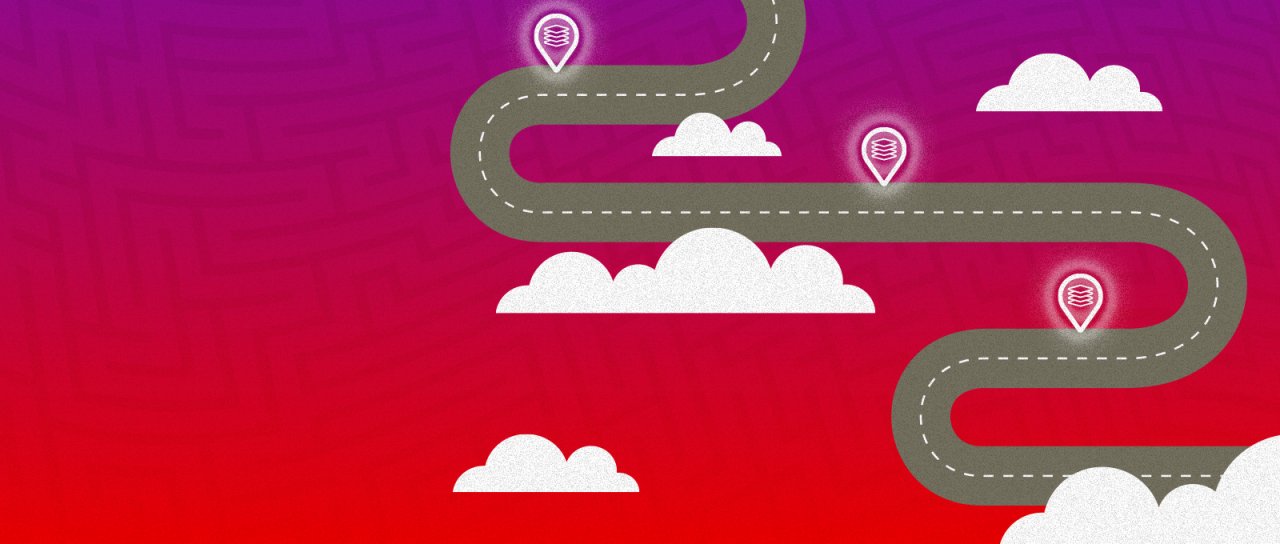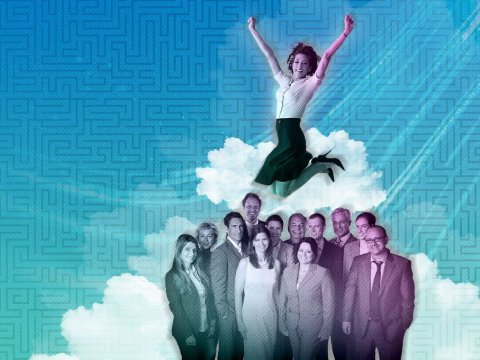5 Keys to Building Buy-in for Your Application Modernization
Global survey reveals how to build consensus and zeal around your application modernization journey.
In April 2021, we conducted a global survey of 1,400+ business leaders, across a wide range of sectors, to explore where organizations are on their application modernization journey. We investigated what’s driving them to modernize their applications, the barriers they’re encountering and the factors that have led to success.
One key takeaway was the importance of gaining consensus — across your organization — for your application modernization projects. Most crucial is to gain C-suite buy-in and excitement, early and often. But you’ll also need to win over employees and turn them into enthusiastic advocates for your new solutions.
The data revealed solutions that can put your modernization projects on the road to success — and they’re all centered on your people, not your technology. To help you navigate the relationships involved, here are the five keys to building consensus and zeal around your application modernization journey.
#1: Know your C-suite advocates and challengers
According to our survey, you’re likely to find that your Chief Information Officer (CIO), Chief Technology Officer (CTO), and Chief Executive Officer (CEO) are the most supportive of your application modernization efforts. This is because they are, according to our survey respondents, the ones most likely to understand the importance, use and bottom-line benefits of technology to the business.
As a result, they’re the most likely to buy in quickly. They’re also often looking for quick wins in the midst of a bigger strategy.
But even having the support of the CEO isn’t enough. You must address the concerns of those most likely to be challengers: those who express doubts and concerns up front, who also have the authority to say “yes” or “no” to your project. Our survey revealed those roles to be the Chief Financial Officer (CFO), Chief Operating Officer (COO), and Chief Revenue Officer (CRO).
These C-suite executives are less likely to quickly buy in to the “importance, use, and bottom-line benefits” of a particular technology. These critical players will require stronger, clearer, and more-detailed business cases from you. Because they are accountable in the organization for different kinds of goals and metrics, they are most likely to challenge your assumptions and value proposition.
#2: Confirm your advocates’ support
To build up your case for a new application, go to your advocates first (CIO, CTO, CEO). According to our survey, these executives consider customer experience, security and compliance, and IT strategy as the primary reasons to adopt a new technology. So start building a case around how the application supports those goals.
#3: Build the case for your challengers
Since CFOs, COOs, and CROs all share a concern around the bottom line and managing costs, we recommend you focus on building a strong ROI business case around cost and efficiency. Help them visualize the capabilities of the application, which can make its potential benefits more tangible and obtainable. This will help them understand how the modernization project will help them meet what they are accountable for in their specific roles.
While building your case, be prepared for these common arguments:
- “It’s just another expense.”
Adopting a new application or modernizing an application can sound like just another expense, or a huge undertaking that will require painful transitions for both the company and customers. In fact, the fear of negatively impacting the customer experience is a top barrier-to-change for our respondents. So there may be little incentive for these executives to change the status quo, especially if what is being done now works well enough. - “We’re doing too much already.”
According to our survey, 71% of organizations are already involved in multiple modernization efforts. Agreeing to additional projects while still in the process of completing others may seem like compounding risks before any benefits can even be experienced.
#4: Give special attention to the COO
The COO role can be crucial to the success of getting new applications adopted and integrated into current processes. They’re accountable for operational excellence and cost efficiency, and they’re often inundated with complaints and requests around internal tools and applications.
This combination of pressures for excellence, cost efficiency, and employee experience make the COO a challenging stakeholder. But they’re also the most powerful and influential individual in the application modernization journey.
It’s possible that the COO wants to adopt a new application to solve existing pains but worries that the actual implementation may not be worth its value. Or worse, they may think the new application is not necessary and will not advocate to get employees using the new tool.
#5: Get to know your supporters and challengers among your employees
Successful application adoption also requires the support of the people who will be using the application: your organization’s employees. When surveyed, our participants reported that while 52% of their employees range from “not very resistant” to “not at all resistant” about adopting new technology, 23% are “very resistant” or “extremely resistant,” and 25% need more convincing. With up to half of employees likely to be resistant to change, you’ll need to address their concerns and even fears.
25% of your employees are likely to be on the fence. Odds are that this group may be willing to adopt new technology if the benefits can be proven. On the other hand, they may also join the 23% who complain or are openly resistant to change if the experience is poor and they are not convinced of the benefits. Converting this group of employees into advocates can be powerful in building consensus among your employees.
Employee buy-in can make or break your modernization project
To further investigate adoption success, a recent in-depth, qualitative review and analysis of organizational experiences — both good and bad — revealed a compelling story about applications change:
An enterprise company recently decided to change a key business application. The change had full buy-in from all C-suite and financial leaders. It eliminated duplication, streamlined integrations, strengthened a strategic partnership, and cut maintenance effort and cost in half. It was a no-brainer.
But when the announcement was made, employees immediately pushed back. Unknown to decision-makers at the time, critical automated processes and data had been built into the previous application over time. Despite the new platform having similar capabilities, employees were unable to simply “lift and shift” their processes and channels. Months later, the lingering pain and artifacts of a rough transition are still evident within the company.
When making a technology change that impacts employees, treat them as respected stakeholders by including them in the process. From that in-depth investigation, key success actions can emerge. Here’s what we recommend:
- Create an employee focus group to identify critical processes that may be affected and other potential concerns.
- Develop a detailed transition plan, using inputs from the focus group sessions.
- Demonstrate to employees the direct benefits of using the new application, helping build enthusiasm around its capabilities.
- Make sure there’s frequent and transparent communication from the leadership team. They should demonstrate to employees that, while change is painful, the long-term benefits make it worthwhile.
Get on the path to a successful application modernization
Implementing an application modernization project is a big change with impacts on your organization’s operations, expenses, and revenue. To mitigate concerns and fears, you must first find out who your challengers and supporters are, both in the C-suite and among your employees. Discovering who these people are, diagnosing their fears, and addressing them will be powerful in converting challengers into advocates — setting you and your organization on the path to application modernization success.

Global Report: Customer Experience and Technology
About the Authors

UX Researcher
Malia Canann
Malia Canann, MA, is a UX Researcher with multi-disciplinary expertise in technology, non-profits, and field research. As a Researcher at Rackspace Technology, she is dedicated to understanding and advocating for customers - whether through reviewing and analyzing data, having conversations with customers, or representing the customers’ voice to the organization. Malia has lead key studies at Rackspace Technology, including global discovery on infrastructure security journeys, performance and usage metrics, applications competitive analyses.
Read more about Malia Canann
Head of Research
Laura Faulkner
Laura Faulkner, PhD, is the Head of Research for Rackspace Technology. For 25 years she has worked to establish and expand the field of user experience and human research in technology and design. Dr. Faulkner’s expertise is rooted in that experience, backed up by a Masters and PhD in human factors psychology as well as scientific degrees in anthropology and sociology. She is the author-originator of the seminal work in her field, “Beyond the Five-User Assumption.” Her personal life mission is to help people breathe easier by making complex things simple.
Read more about Laura FaulknerRelated Topics





